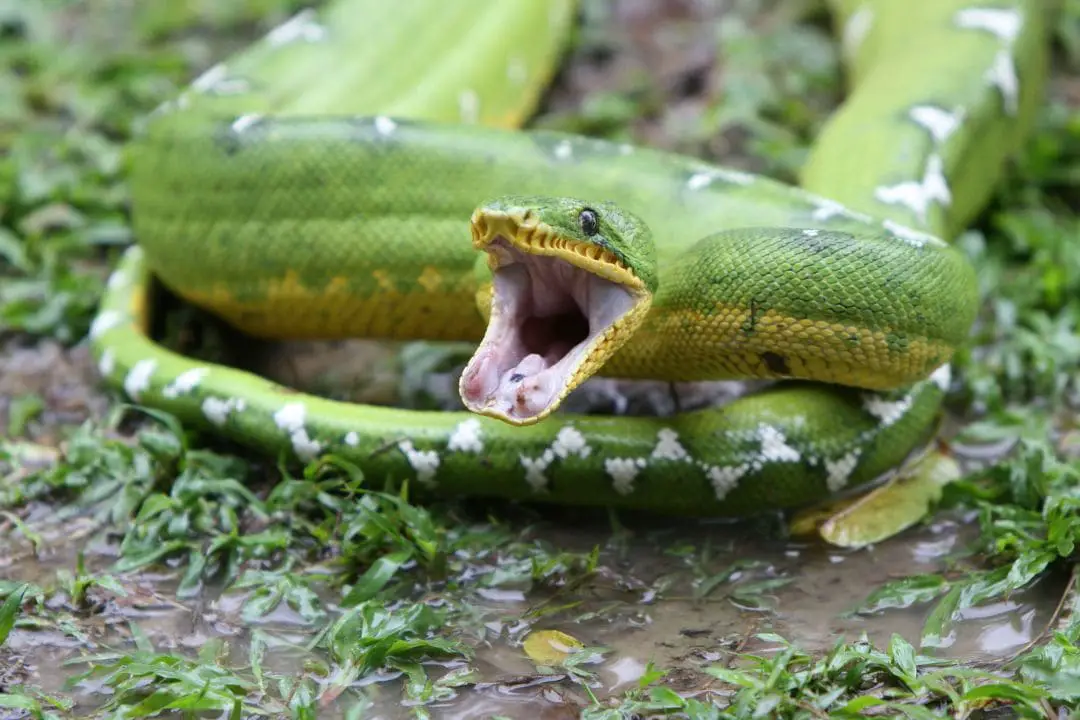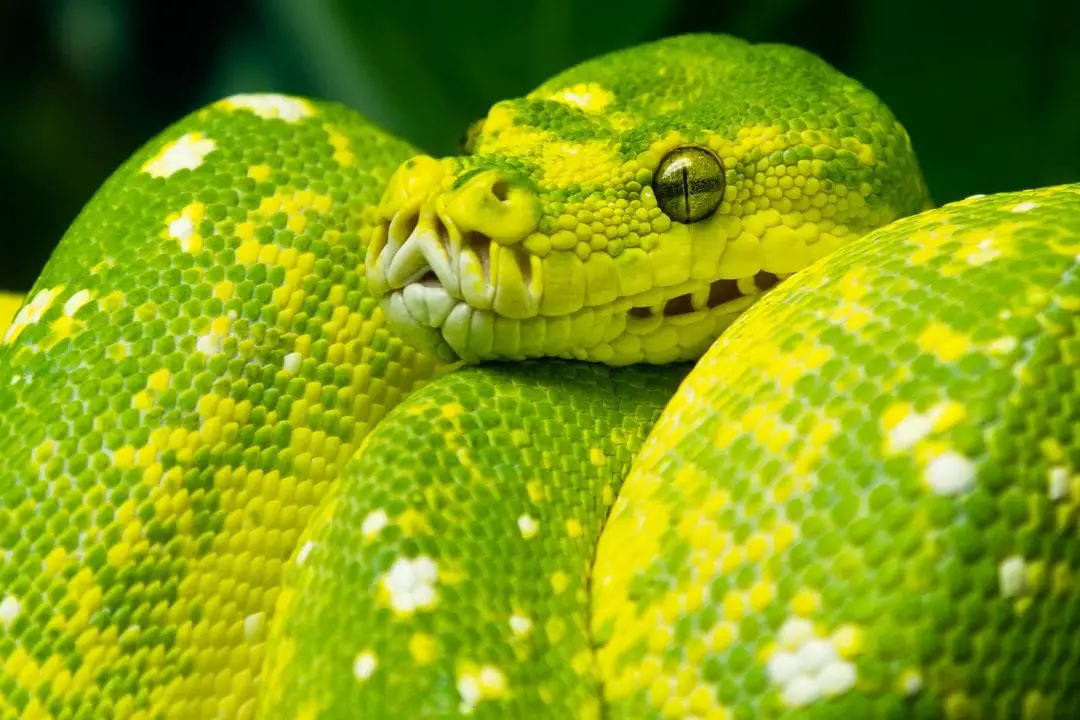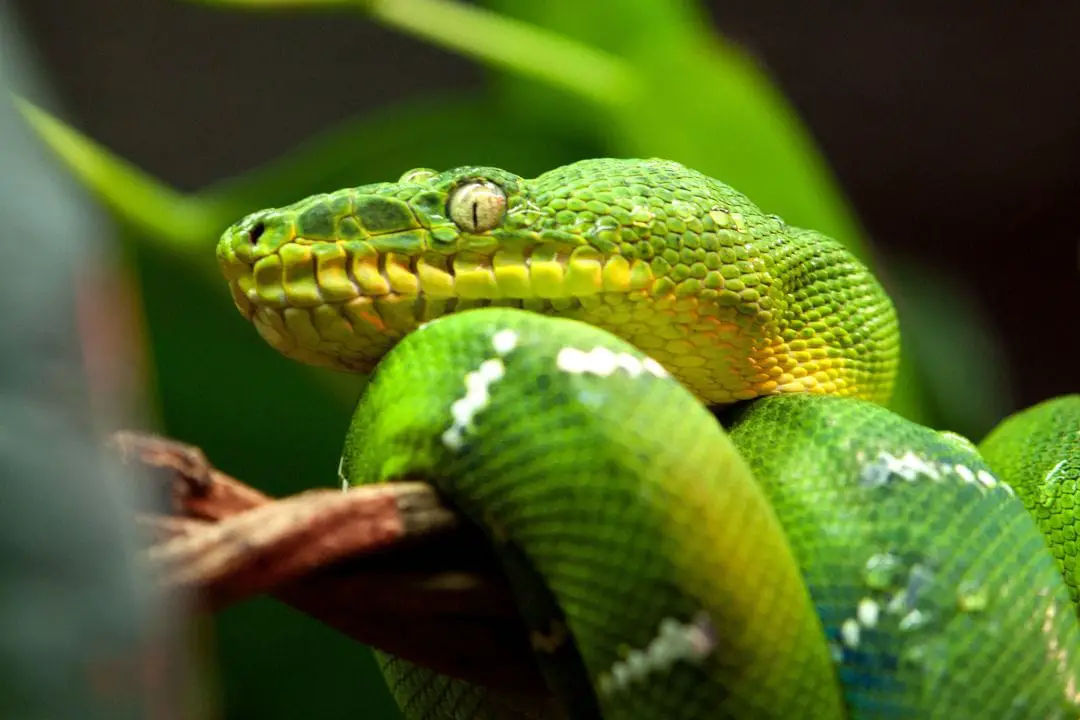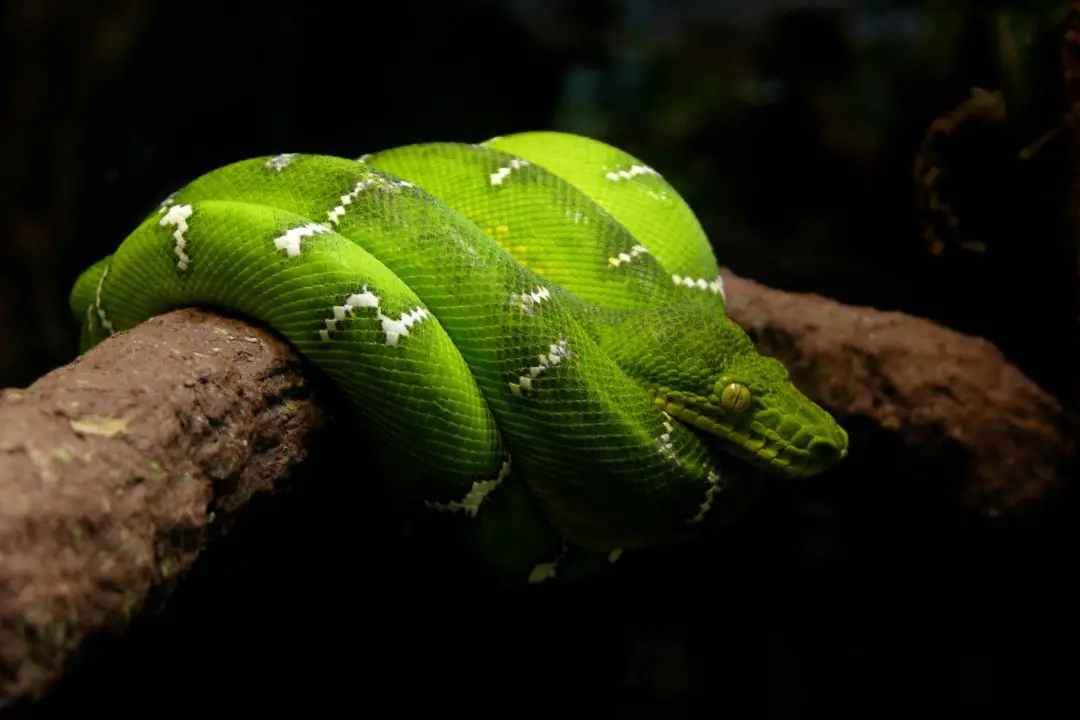If you’ve seen your emerald tree boa yawning, you may be concerned. After all, a emerald tree boa’s giant yawn is something impressive to behold, especially with those teeth.
Sometimes, they may even unhinge their jaw and you get to see that view their frozen/thawed prey gets to see!
Why do emerald tree boas do this? Is it worrisome if you see one doing it a lot? Let’s take a look at why snakes yawn, especially in emerald tree boas.
Readjusting the Jaw After Feeding
This is almost always why emerald tree boas yawn. They’ve just had a great big meal or a big drink and they just need to pop everything back into the place it goes.
This is no reason to be alarmed; it’s just like you yawning after lunch. Like us, there are lots of hormones that are released directly in relation to feeding and drinking.
Though emerald tree boas may or may not be capable of feeling the same emotions that we do about eating (the jury is still out on just how emotionally reactive emerald tree boas are), we do have evidence that they receive similar hormone release to what we experience.
If a emerald tree boa constantly has to readjust its jaw after eating, this may be worth checking up with a vet about. A scrap of fur could be uncomfortably caught on a tooth, a tooth may be misaligned and pressing into the roof or bottom of the mouth, there could be a mouth abscess, or plenty of other causes.
Once or twice is fine, but multiple times after every feeding and a general sense of discomfort could be bad news.
Stress and Illness
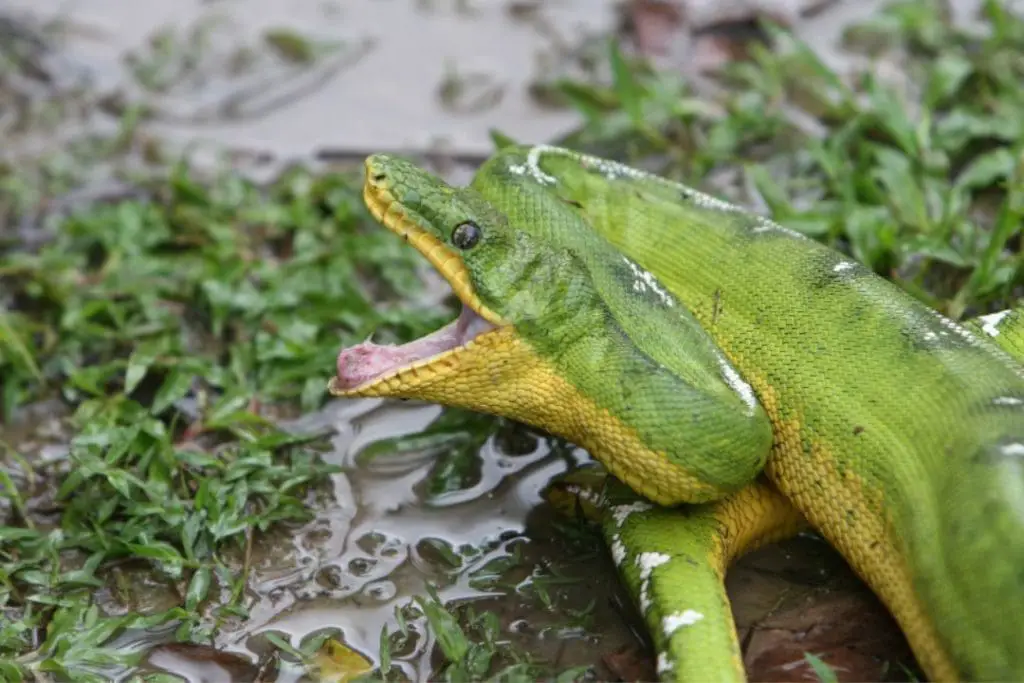
Emerald tree boas can’t exactly blow their noses when they’re having trouble breathing and they really aren’t set up to breathe through their mouths.
In many cases, especially with sensitive species like the emerald tree boa, you’ll find that a snake is “yawning” when it is actually gasping for air due to a respiratory infection.
When this happens, the emerald tree boa has multiple systemic problems popping up at once.
Cold-blooded animals use oxygen a little differently than warm-blooded animals do and a lack of it (or trouble getting it) really draws them down.
You don’t feel good when you have a cold or a stuffed-up nose, but emerald tree boas can easily die from respiratory infections whereas we just need a little Benadryl.
Common signs of respiratory illness include repetitive yawning, a lack of interest in food or water, nasal discharge, regurgitation and wheezing.
In some other species, lethargy is a very big tell but emerald tree boas are a pretty slow-moving species to begin with and we recommend against waiting to see if your emerald tree boa has a change of pace.
If you’re certain that your emerald tree boa isn’t sick, check your hygrometer, thermometer, and all other enclosure parameters.
It’s very likely that you’ll find a stressor of some sort in or near the enclosure. Emerald tree boas, just like us, can use yawning as a comforting gesture.
Though they don’t realize what they’re doing, it is very likely that they are just trying to calm down and cope with the nerve-wracking issue that they’re seeing or feeling.
If you find all is well, we recommend placing the enclosure in a dark room overnight. It could just be that nighttime lighting or light pollution is getting to the emerald tree boa.
Draw your blinds, turn off internal lighting, and make it as dark as you possibly can to give the emerald tree boa a break. After all, emerald tree boas are most often predated upon during the daylight hours.
The emerald tree boa may just need a break from the natural instincts telling it to keep an eye out for predators.
Trauma
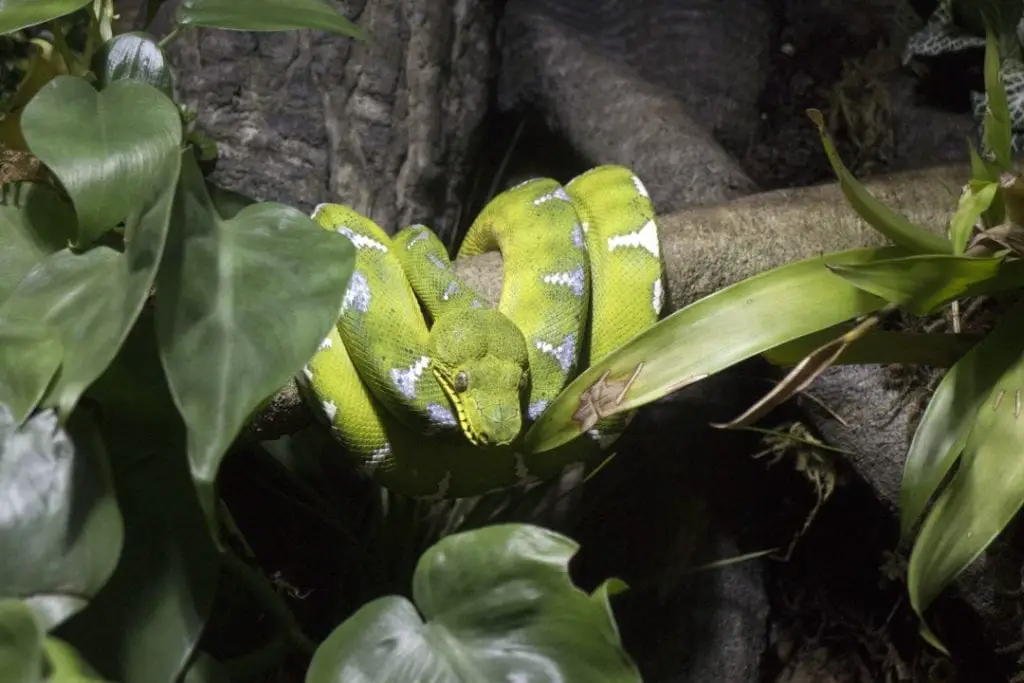
On rare occasions, emerald tree boas and many other species may get hurt while eating.
This could be because you’ve recently increased prey size, they strike and hit the side of the enclosure rather than you or the prey animal, you’re needing to feed live prey for some reason, or dozens of other possibilities.
If you’ve seen your emerald tree boa hurt itself and it keeps yawning or there has been a serious change in feeding as of recently, we recommend calling your vet for further advice.
The vet may or may not want to see the animal to check teeth and gums and look for problems. If they don’t, continue to observe your emerald tree boa to be certain that the yawning stops.
If it does not, take the emerald tree boa in to the vet anyway and ask for an examination. There is a very good chance that something is wrong and you must attend to it.
If you do not believe it is an eating mishap or that the emerald tree boa has fallen or otherwise been injured in the enclosure, trauma can also come from bites.
It is natural to pull away from something that is hurting us, but when we are bitten by our emerald tree boa, this can rip teeth out of the emerald tree boa’s mouth or break them.
This will often lead to yawning as the emerald tree boa tries to resettle its sore mouth. If you’ve pulled away from a bite, it happens.
Try not to beat yourself up about it and take your emerald tree boa in to the vet to make certain you don’t need to have an extraction done.
Still Not Sure?
Observe, observe, observe. The best thing that you can do in any situation with a reptile is to watch it for odd, new habits. Once you’ve had your emerald tree boa for a while, you’ll know what is regular and what is not.
If you spot any strange new problems, your herp vet should always be willing to give you the information you’re after.
For a more general overview on Emerald Tree Boa husbandry, you can also read my complete care sheet.
While we don’t recommend calling them for every little thing, constant yawning is almost always a sign of respiratory distress or an injury in these beautiful animals and will probably result in a relatively small vet bill.
Go ahead and take them in. The worst that can happen is that you’ve brought your emerald tree boa in for no reason and you go home knowing they’re healthy.
